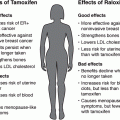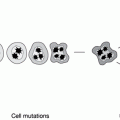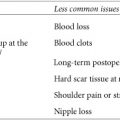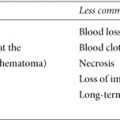Chapter 3
Defining Risk
DO YOU WORRY about getting malaria? Probably not if you live in the United States, where our risk of that disease is slim. But like many women, you may fear your risk of cancer, especially when you hear that 1 in 8 women will develop breast cancer. This means that, based on current rates of breast cancer in the entire U.S. population of women, 1 of 8 women born now will develop the disease by age 85. That sounds like a lot, but it also means that 7 of 8 women won’t be diagnosed. Ovarian cancer occurs less often; the average woman has just a 1 in 70 chance in her lifetime.
The 1 in 8 and 1 in 70 estimates represent the average woman’s risk for breast and ovarian cancer, yet these are broad statistics that don’t define what you need to know to address your own risk: what is it now and how will it change as you grow older? If you’re 20 years old now with an average risk for breast cancer, you have a 1 in 8 chance of being diagnosed in your lifetime. Your current risk isn’t 1 in 8. It’s much lower and gradually increases as you age (most risk occurs after age 50). Until we know all the causes of cancer, we can’t be sure about an individual’s exact risk. In the meantime, scientists use population-based figures to describe the frequency of a disease, to help public health officials develop screening guidelines, and to determine cancer trends.
U.S. lifetime breast and ovarian cancer rates
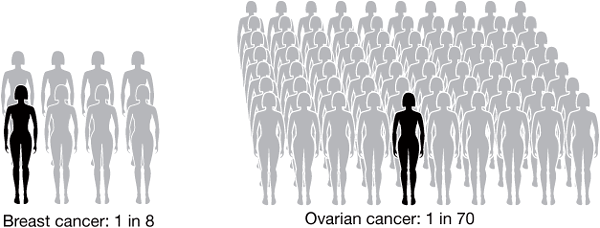
Making Sense of Statistics
Breast cancer is one of the most studied diseases in the world, yet most women don’t know much about their own risk. Even fewer understand their odds of developing ovarian cancer. The concept of cancer risk can be confusing—just hearing risk is chilling—and because it’s often expressed in different ways, understanding how it applies to you can be difficult.
Certain factors raise your likelihood of disease: having high blood pressure increases your chance of developing heart disease, obesity boosts the odds of diabetes, and inheriting a BRCA mutation significantly raises your probability for breast and ovarian cancer. There are many reasons why your chance of developing cancer differs from someone else’s, and therein lies the complexity, if not the impossibility, of pinpointing a person’s exact risk. Your own risk of breast cancer isn’t 1 in 8 because you’re not average. It’s a moving target that changes throughout your lifetime, depending on your family history, age, race and ethnicity, lifestyle, and other factors that shift your odds of developing cancer higher or lower than the population average. Although risk assessment is never an exact science, it’s becoming more precise as researchers continue to learn about factors that influence cancer. Fortunately, genetics experts can assess different aspects of your personal medical history and family history to help you better predict and understand your risk. Confronting that risk may be frightening, but it’s critical to do so, especially if you’re genetically predisposed to one or more cancers, because if your risk is high, you have options for managing it.
MY STORY: The Gail Model Didn’t Work for Me
My mother was diagnosed at age 31 and died four years later. My grandmother and great-grandmother also had breast cancer, and I wondered if there was a hereditary link. I asked my primary care physician about genetic testing, reminding him that my mother had been diagnosed at my age. He told me his nurse had just received a risk tool called the Gail Model that could assess my risk. Based on my answers to just seven questions, she determined I wasn’t at high risk. I was relieved, but I couldn’t stop thinking about one of the questions she had asked repeatedly: “How many of your sisters or your mother’s sisters developed breast cancer?” My answer had been zero, because neither of us had any sisters. Would a different answer affect my risk assessment? I realized the test didn’t apply to me because I had few female relatives. I needed someone more qualified, and that led me to genetic counseling and then genetic testing, which showed I have a BRCA1 mutation and my risk is actually quite high.
—JORDAN
Getting Personal: Factors That Modify Your Risk
Risk is the probability of something occurring at a certain time. When you drive to work each day, you take the chance of getting stuck in traffic or being rear-ended. Climb a ladder and you risk falling off. We’re all susceptible to the risk of developing certain cancers, even though our risk is not the same. Having one or more risk factors—including a BRCA mutation—doesn’t guarantee you’ll develop cancer. It means you’re more likely to do so. Smoking, for example, increases the odds of developing lung cancer. Stop smoking, and you decrease that risk. Obesity is a contributing risk factor for some diseases; maintaining a healthy weight has the opposite effect. You can control numerous lifestyle factors to reduce your risk; others you cannot. The following factors affect breast and ovarian cancer risk in the general population and, in some cases, may also influence risk in women with BRCA mutations.
Breast and ovarian cancer risk factors you cannot control:
• Being female. All women are at risk for breast and ovarian cancer.
• Growing older. Your risk increases as you age, whether or not you have a BRCA mutation.
• Personal history of breast cancer. Surviving breast cancer increases your risk for another diagnosis whether or not you have a BRCA mutation. The risk is greater for women with mutations.
• Inheriting a genetic mutation. Having a BRCA mutation raises the risk for breast and ovarian cancer more than any other factor. Other inherited mutations may also raise cancer risk (discussed in chapter 4).
• A family history of breast or ovarian cancer. Having a family history of cancer influences risk, although it’s difficult to predict how much. About 1 in 4 women with breast cancer has a relative who has also been diagnosed; most don’t have a BRCA mutation. If your family has multiple members with breast cancer, no history of ovarian cancer, and no known BRCA mutation, your estimated lifetime risk for breast cancer is 20 to 25 percent.1 Your lifetime risk for ovarian cancer is 1.4 percent (the same as an average woman’s).2 Having relatives diagnosed with ovarian cancer raises your risk for a similar diagnosis, even when you have no known mutation. Within BRCA families, having more cancers among relatives appears to cause higher breast and ovarian cancer risk for women family members. No matter what your family history, a genetics expert can help explain your personal risk.
• Race and ethnicity. Certain populations are more likely to develop breast cancer. Compared to white women, African American women have lower rates of breast and ovarian cancer but are more likely to be diagnosed before age 40. Their breast tumors are often particularly aggressive or triple-negative cancers that don’t respond to hormone-blocking therapy, and their breast cancer mortality rate is higher than any other group of U.S. women.3 Hispanic women are also diagnosed less frequently than their white counterparts. When they develop breast cancer, their tumors are more likely to be advanced. Among Asian women, breast cancer occurs less frequently, but it’s increasing at a faster rate.
• Very high radiation exposure. Receiving radiation to your chest as a child or young adult elevates your risk of developing breast cancer later in life.
• Age at first menstruation. Early menarche increases the risk for breast cancer in the general population and may have the same effect in women with BRCA mutations.
• Previous breast biopsies. Having any number of biopsies, especially if they showed certain precancerous breast changes, can indicate increased breast cancer risk.
• Breast density. Women with dense breast tissue have greater risk of developing breast cancer, LCIS, and other precancerous abnormalities.
• Infertility. Though research is limited and the connection is unclear, infertility has been linked to increased breast cancer risk in BRCA carriers and to breast and ovarian cancer risk in the general population.
Breast and ovarian cancer risk factors you can modify:
You can’t totally eliminate your risk for cancer, but you can change your behavior to reduce your risk. The following factors affect breast and ovarian cancer risk to different degrees in the general population and, in some cases, also influence risk in BRCA carriers. In subsequent chapters, you’ll read more about how you can modify these lifestyle factors to change your risk.
• Pregnancy. Being pregnant affects breast cancer risk in complex ways. For all women, a first pregnancy while young lowers risk—the younger you are, the more beneficial the effect. If you’re a previvor, your risk may also be affected by your number of pregnancies and whether you have a mutation in BRCA1 or BRCA2.
• Oral contraceptives. Using oral contraceptives while young and continuing for more than five years may increase breast cancer risk in women with BRCA mutations (research is limited). On the other hand, oral contraceptives lower the chance for ovarian cancer in all women.
• Tubal ligation. In the general population, tying a woman’s tubes may lower her risk for ovarian cancer, although not as much as oral contraceptives do. Whether this is true for high-risk women is unknown.
• Hormone replacement therapy. Women of average breast cancer risk who take combined estrogen and progesterone hormone replacement after natural menopause have increased risk for breast and ovarian cancer. Hormones may be safer for previvors who pre-emptively remove their breasts and ovaries than for women in the general population, who have undergone natural menopause.
• Alcohol consumption. Having one or more drinks a day elevates the chance of breast cancer in women of average risk. Researchers aren’t sure whether women with BRCA mutations are affected in the same way.
• Exercise and obesity. Evidence suggests that physical activity and maintaining an ideal body weight (avoiding obesity) lower the odds of developing breast cancer in women of average or high risk.
• Breast reduction. Some preliminary (and not widely validated) research indicates that breast cancer risk is reduced after breast reduction surgery.
• Removing both breasts and ovaries. These aggressive preventive actions reduce your risk.
It’s a Numbers Game
Calculating someone’s precise risk for BRCA-related breast and ovarian cancer is difficult. It’s a field that is still evolving, and we simply don’t know everything about it, including other genes or factors that might also influence risk. BRCA risk estimates are calculated from studies of large multicancer families, and it’s unclear how much risk is due to genetic mutations or environmental influences shared by family members. In the absence of finite predictions, genetics experts use a range of numbers to describe a person’s odds of developing cancer; even this range of risk varies. Experts may not agree on the exact numbers, but they do agree that inheriting a BRCA mutation means higher-than-average risk that warrants increased surveillance or risk-reducing strategies.
Stay updated, free articles. Join our Telegram channel

Full access? Get Clinical Tree


